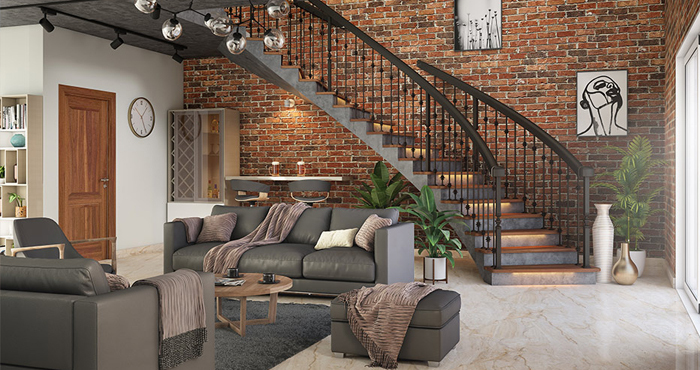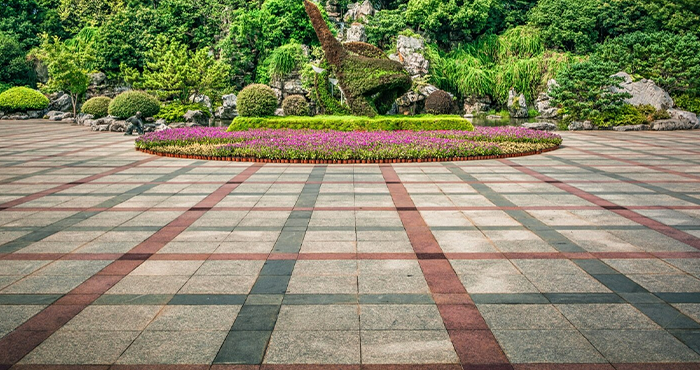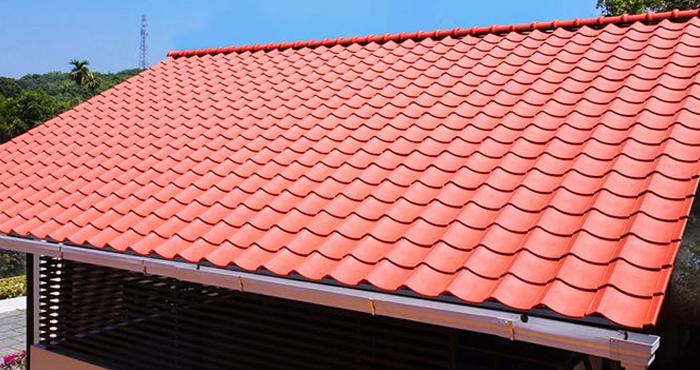Often used in commercial, industrial, and residential construction, bricks are durable, reasonably fireproof, and heat-resistant building materials. Even for little masonry tasks like installing a simple brick mailbox stand or creating supports for a patio seat, the quality of brick may make a big impact. With different varieties of bricks available in the market, it’s crucial to educate yourself on which types of bricks are apt for your construction and how to identify them.
What are the various types of bricks?
To help you decide which is best for your construction, we’re going to look at the most popular types of brick used in construction.
Extruded bricks
The most common way of producing bricks is the extruded/wire cut method because it produces a large number of bricks quickly—roughly 20,000 bricks per hour. To create a continuous material column with the required breadth and depth, clay is forced through an extrusion head. An extruded brick has core holes or perforations that often run through the bricks’ bed – this is one way to identify them.
In addition to using less energy during drying and fire, perforated types of bricks are also lighter and simpler to handle. This production method results in firm and thick bricks that are more uniform in size and shape; have sharper edges; and have a more modern appearance.
Pressed bricks
To press clay into a mould to create cladding tiles, bricks, or pavers, clay powder with certain moisture content is used. Making these sturdy types of bricks involves squeezing clay into distinct moulds. Powerful, contemporary architecture and residences in the Federation style may both benefit from their strong lines.
Dry-pressed
Dry-pressed bricks feature a cork-like look and a frog-shaped depression on the bottom that serves as a key for the mortar bed. Bricks that have been wet-pressed have a smoother, denser surface and are exceptionally robust.
Concrete Bricks
These bricks, which are composed of solid concrete, are typically employed in interior brickwork or to create facades and fences. These types of bricks could be available at a nearby hardware shop or masonry supplier.
With a normal mixture of one part cement, two parts sand, and four parts aggregates, professionals may create these concrete bricks on the job site itself. Using an altered ratio of one part cement, three parts sand, and six parts aggregates produces stronger bricks, which can be used for creating foundations.
Firebricks
Firebricks are the ideal building material if the project aims to build a wall, framework, or structure that is extremely heat- and fire-resistant. These types of bricks, which are often referred to as refractory bricks, are produced using fireclay, a unique kind of clay with a silica and alumina predominance. Firebricks can therefore endure temperatures of more than 3,000 degrees.
Not only can firebricks withstand flames, but they can also endure low temperatures and abrupt temperature swings between hot and cold. These bricks are generally used to construct wood-fired ovens, brick grills, fireplaces, chimneys, furnaces, and other high-heat structures.
Fly Ash Bricks
Byproducts from coal-fired power stations called fly ash can include poisonous elements including chromium, mercury, arsenic, and antimony. Fly ash bricks are used to reuse and lessen the number of harmful metals discharged into the environment. They are made from class C or class F fly ash, quicklime, cement, aluminium powder, gypsum, and water. Additionally, they have a more consistent shape than certain bricks.
Because of their superior compressive strength and reduced water absorption rate compared to burned clay bricks, these types of bricks are a great choice. Fly ash slabs can crack and break because the durability of fly ash bricks reduces as the brick’s size rises.
How long does a bring last?
Bricks are designed to last for many years. A brick structure is estimated to last for more than 100 years on average.
How can I determine the number of bricks I’ll need?
What number of bricks do I need? To calculate the area of a single-layer brick wall, multiply the wall’s length by its height. To determine how many bricks you should require, multiply that area by 60 and then add 10% for waste.
Conclusion
All your brick demands may be satisfied by Jindal Mechno Bricks, who’ll make sure your experience using their services is easy and trustworthy. With a variety of bricks to choose from, you’ll be able to pick the ideal one for your building. To ensure you get the most value for your money, they will ensure that you receive the perfect form and texture at the right prices.





